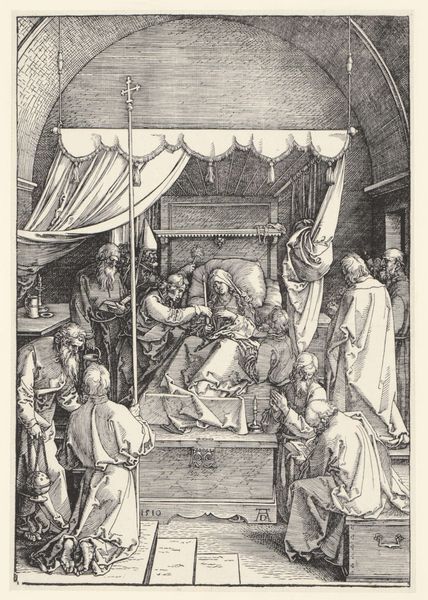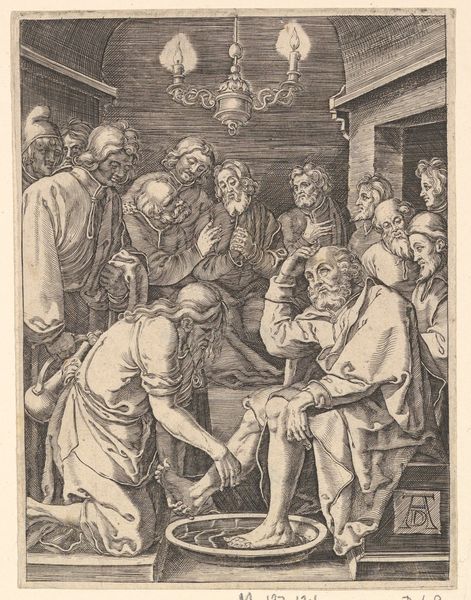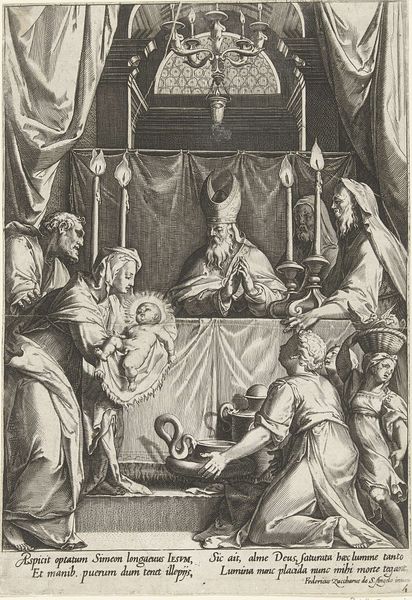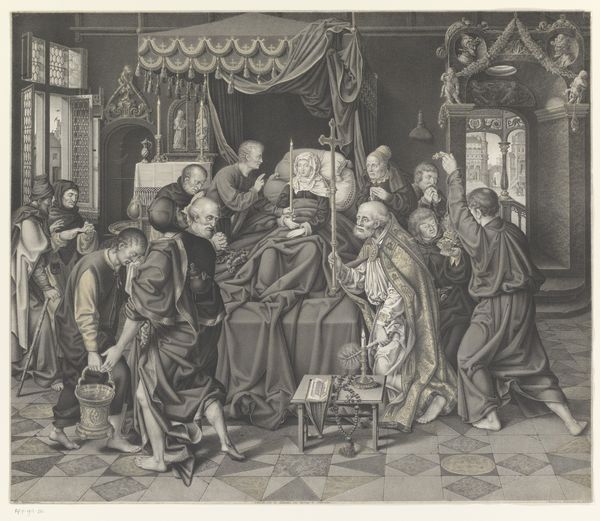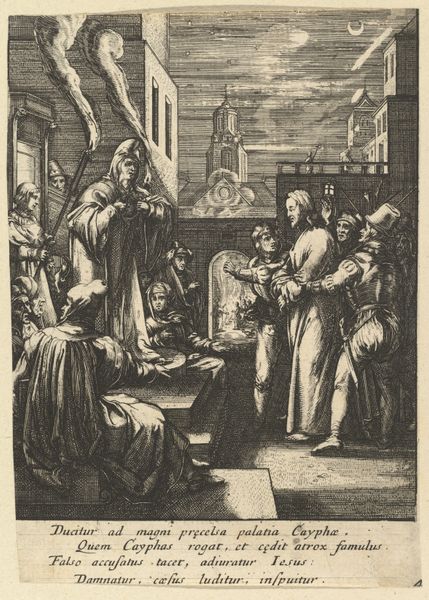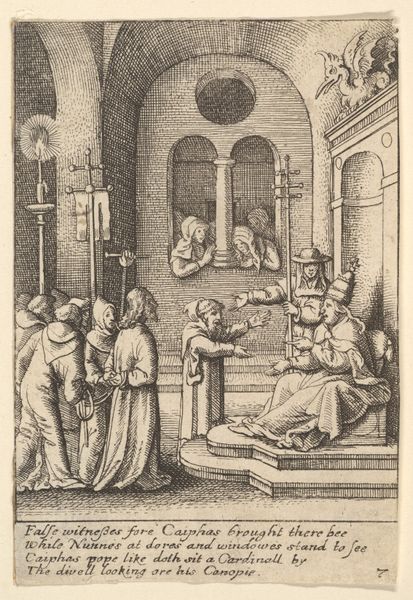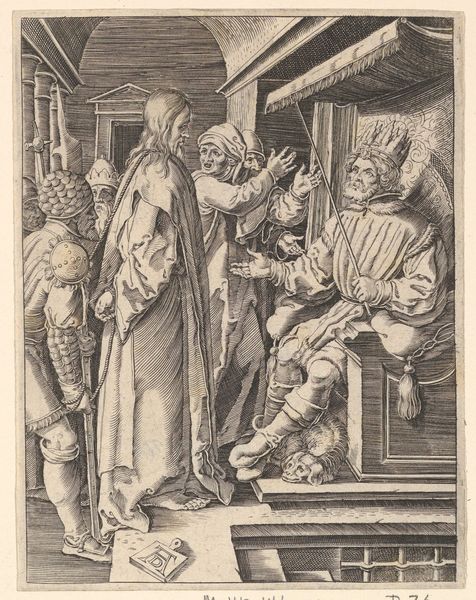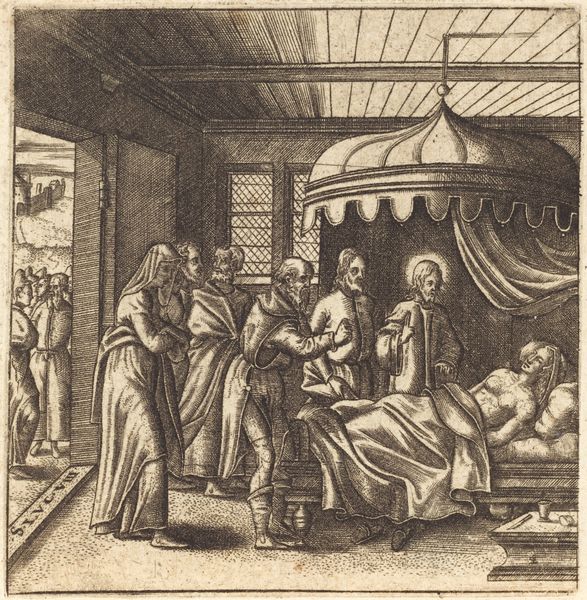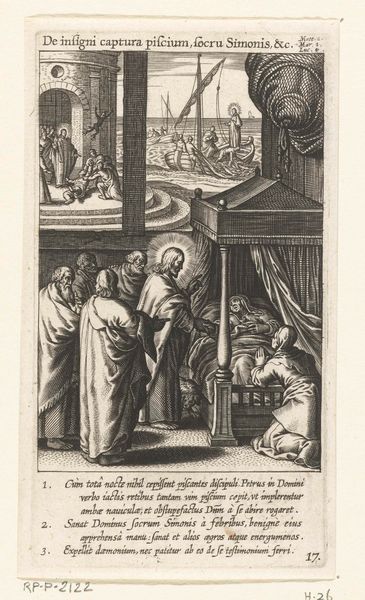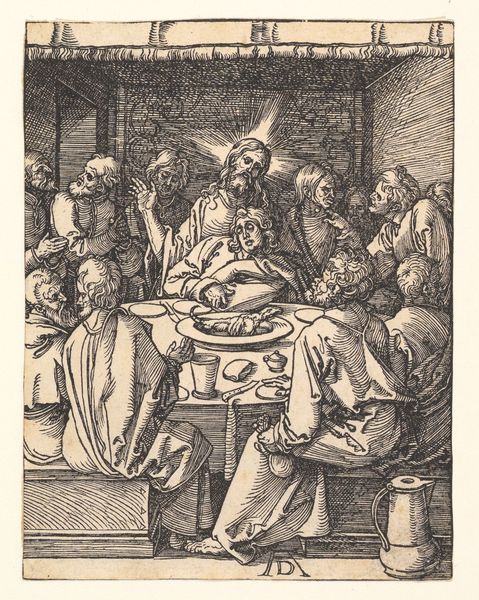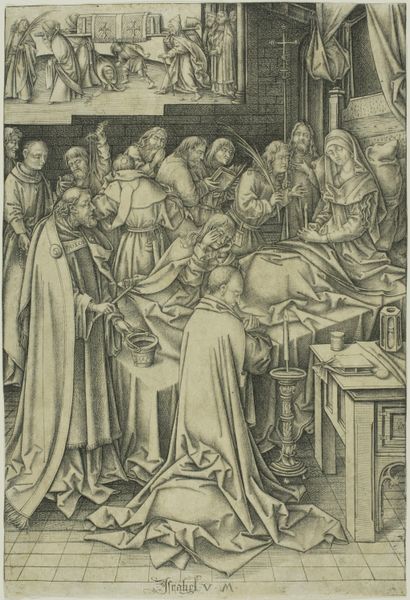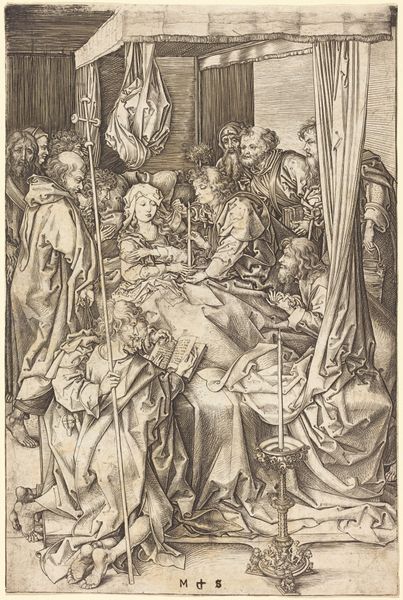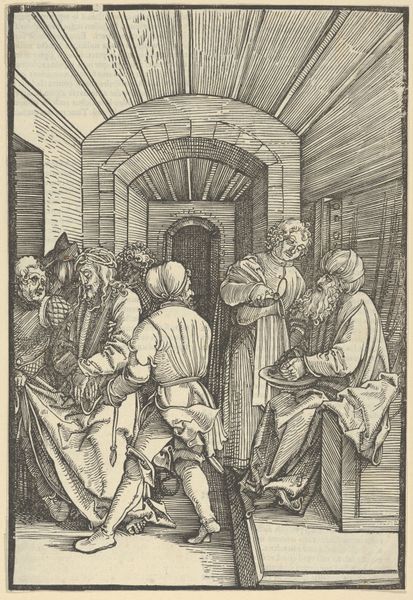
drawing, print, woodcut, engraving
#
drawing
#
narrative-art
# print
#
perspective
#
figuration
#
woodcut
#
history-painting
#
northern-renaissance
#
engraving
Dimensions: 11 7/16 x 8 1/8 in. (29.05 x 20.64 cm) (sheet)
Copyright: Public Domain
Editor: Here we have Albrecht Dürer's "The Death of the Virgin," created around 1510. It's a woodcut print, and what immediately strikes me is how somber the scene is. What kind of statement do you think Dürer was making with this piece? Curator: Dürer's work allows us to delve into the socio-political currents of the Northern Renaissance. While on the surface, it depicts a biblical scene, it’s critical to understand it as a reflection on the shifting religious landscape. Consider the context: the rise of Protestantism challenged established Catholic dogma. Editor: In what way does the artwork speak to those religious tensions? Curator: Look closely at the figures surrounding the Virgin. Their faces aren’t idealized, and the setting isn’t grand. Dürer strips away the opulent theatricality often associated with depictions of the Virgin's death, emphasizing human vulnerability and grief. What does that shift in focus suggest to you? Could this be a subtle critique of the Church's power and pageantry? Editor: I hadn't considered that. The lack of idealization makes the scene feel very human and relatable. Curator: Exactly! And think about the power dynamics. The Virgin, a central figure of the Catholic Church, is depicted in a moment of mortality, surrounded by everyday individuals, which questions the mediating role of religious institutions. So Dürer offers a visual commentary that invites us to rethink established authority and center the individual's spiritual experience. Editor: That’s a fascinating way to see it, placing the artwork within such an intersectional understanding of history, religion, and societal shifts. I definitely see the work in a different light now! Curator: Art, after all, exists within – and reacts to – its specific historical moment. Understanding that context unlocks richer layers of meaning.
Comments
minneapolisinstituteofart almost 2 years ago
⋮
The Death of the Virgin is a meticulously printed pre-publication impression taken from a woodblock prepared for Albrecht Dürer’s elegant illustrated book, "The Life of the Virgin." Twelve apostles attend Mary on her deathbed. Some pray; some read. One holds a censer, another a tall staff topped with a cross. John the Evangelist removes the burning taper from Mary's hand as she peacefully falls still. Peter, wearing a miter symbolic of his new role as leader of the fledgling church, blesses her with an aspergillum which has been charged in the pot of holy water held by his assistant. Light enters the room from the right, adding to the perspectival space and giving the figures full dimension. We are in a sacred place; so, the men have removed their shoes—Dürer gives us a fragmentary view of one discarded piece of footwear shoved beneath the bed. With this woodcut and others of similarly high quality, Dürer fused the intricacy of German art with the structure and airiness then flourishing in Italian art.
Join the conversation
Join millions of artists and users on Artera today and experience the ultimate creative platform.
